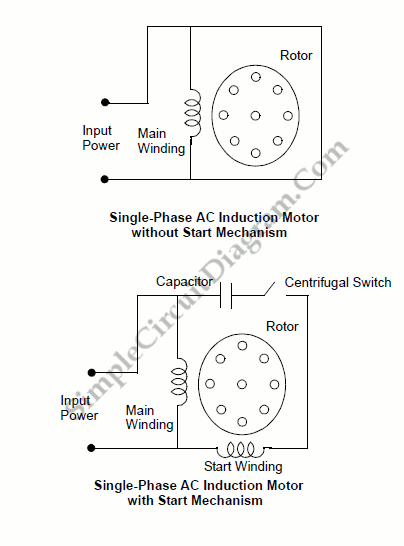Start Mechanism in Single Phase Induction Motor
The single-phase induction motor is not self-starting device. The main winding carries an alternating current when the motor is connected to a single-phase power supply. A pulsating magnetic field will be produced by this current. The rotor is energized due to induction. The torque necessary for the motor rotation is not generated as the main magnetic field is pulsating. This will cause the rotor to vibrate but not rotate. Hence, to make the motor rotate, the single phase induction motor is required to have a starting mechanism that can provide the starting kick.

As shown in the above schematic diagram, the starting mechanism of the single-phase induction motor is mainly an additional stator winding (start/auxiliary winding). The start winding can have a series capacitor and/or a centrifugal switch. Current in the main winding lags the supply voltage due to the main winding impedance when the supply voltage is applied. Current in the start winding leads/lags the supply voltage depending on the starting mechanism impedance at the same time. The main winding generates interaction between magnetic fields and the starting mechanism generates a resultant magnetic field rotating in one direction. The motor starts rotating in the direction of the resultant magnetic field.
A centrifugal switch disconnects the start winding once the motor reaches about 75% of its rated speed. The single phase motor can maintain sufficient torque to operate on its own from this point. All single-phase motors are generally used for applications up to 3/4 hp only except for special capacitor start/capacitor run types. [Circuit’s schematic diagram source: Microchip Application Note]